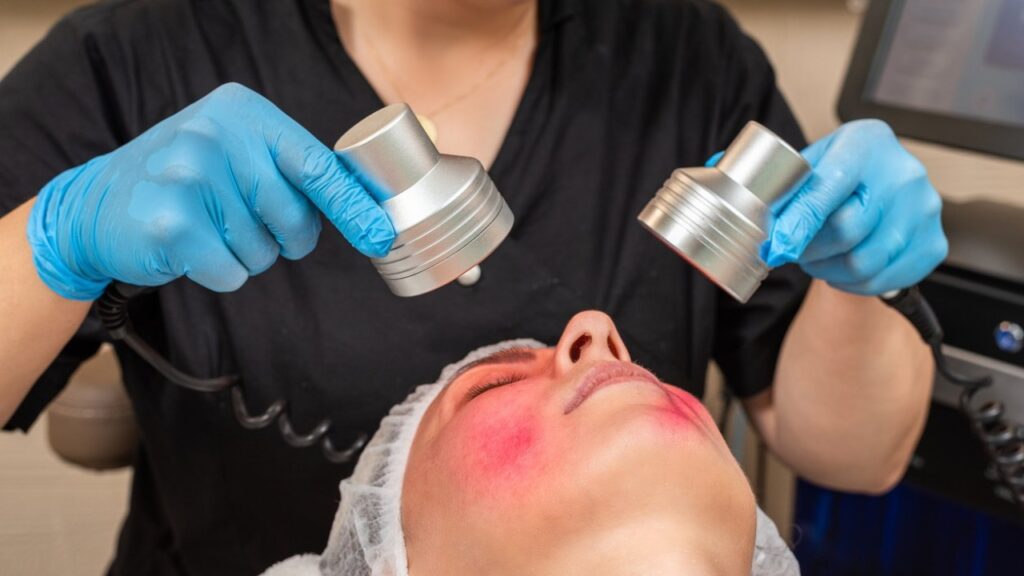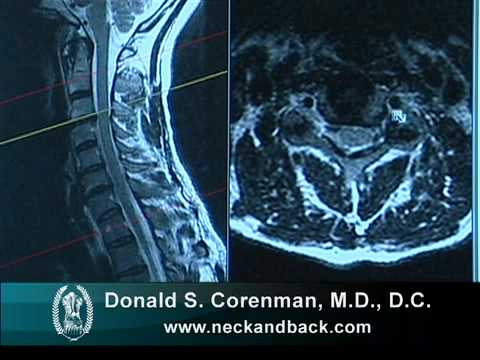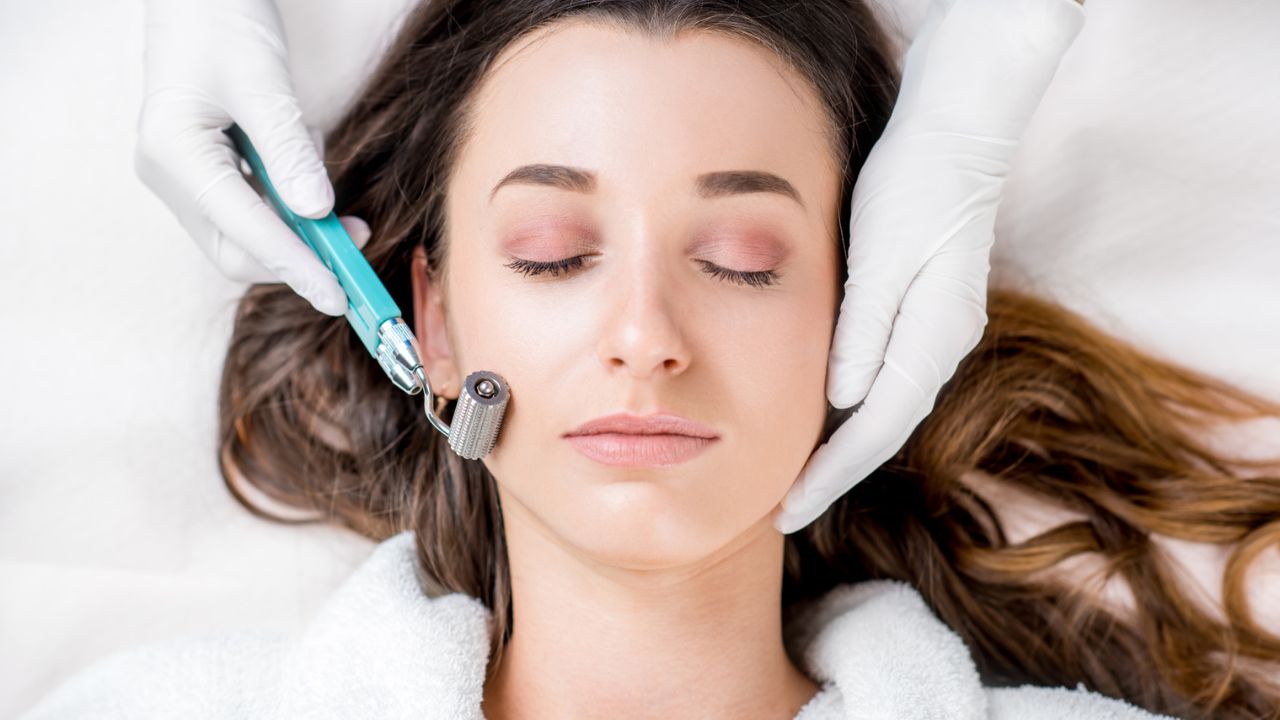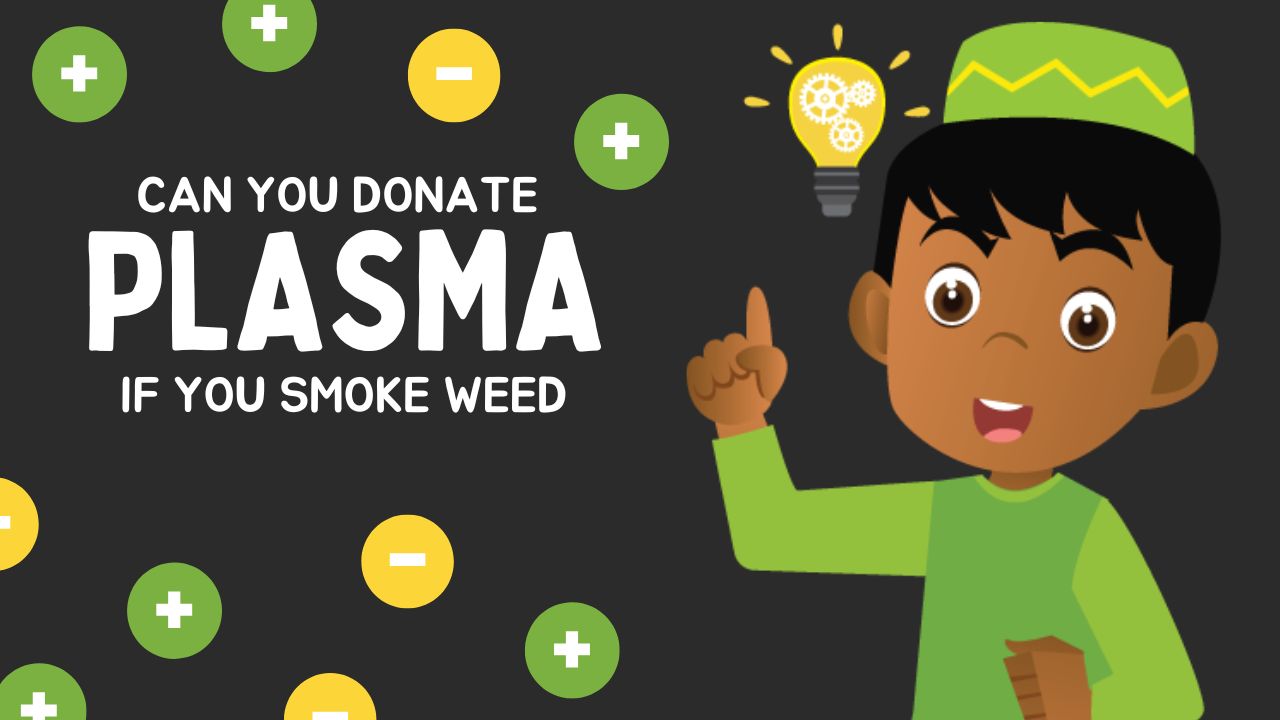Does Red Light Therapy Really Work?

Red light therapy is frequently touted as an anti-aging treatment as well as a treatment for a variety of skin problems. Red light treatment has the potential to assist manage a variety of illnesses, including pain and inflammation, as well as improve cognitive function and sports performance; however, more research is required in this area.

Low-level laser light therapy is another name for this treatment. Exposure to light of a particular wavelength is required for red light therapy, also known as low-level laser light therapy (LLLT), soft laser therapy, or photobiomodulation (BPM). The treatment might either take place in a doctor’s office or in the convenience of your own home.
What is red light therapy?
Infrared light, which falls under the category of visible light and encompasses red as well as the other hues of the rainbow, is separated from ultraviolet light along the electromagnetic spectrum. Infrared and red light from the visible spectrum is the only types of light that are used in red light treatment equipment.
Light rays are beneficial to cellular health in the same way that food is beneficial to the body by providing needed nutrients. In particular, red light and infrared light are forms of light that are regarded to have a “bioactive” effect.
Within the mitochondria, a metabolic reaction takes place when it is subjected to these light rays, which ultimately results in the synthesis of adenosine triphosphate (ATP) (ATP). ATP creates energy for all living cells.
Hormesis, often known as “positive stress,” is another mechanism that contributes to the efficacy of red light treatment. Red light induces a stress reaction in the body’s cells, similar to how exercise temporarily stresses the muscle so that it can grow larger and more powerful.
This response helps the cells become more resistant to damage. Red light has a shallow depth of penetration and is most effective for treating skin issues since it reduces inflammation and stimulates collagen production.
The deeper layers of tissue can be reached by infrared light, which results in an increase in blood flow. If the blood flow through the body is improved, then more oxygen and nutrients will be delivered to the cells.
The advantages of red light therapy for health
Better skin health
The majority of people are familiar with the use of light therapy for the treatment of skin disorders such as sunburn, eczema, psoriasis, and acne. Light therapy is also used to treat wrinkles and lines that appear as a result of aging.
Reduce inflammation and pain
According to the Centers for Disease Control and Prevention, there are over 50 million people living in the United States who suffer from chronic pain (CDC). Pain is a symptom of a wide variety of persistent diseases, in addition to being a health problem in and of itself.
Although there is a wide selection of medication accessible, researchers are always looking for new treatments that are both secure and helpful in managing pain and inflammation. Red light treatment is showing some promising results, but additional research is still needed to confirm them.
Multiple studies concluded that patients with chronic low back pain who received red light therapy experienced significant and, in some cases, long-lasting reductions in their levels of pain as compared to patients who did not receive the treatment. The results of other clinical trials suggest that persons who suffer from osteoarthritis may benefit from low-intensity light therapy.
Performance-boost
Red light treatment has been shown to be especially effective for treating muscle cells. Because movement demands energy, these cells contain a far higher number of mitochondria than the majority of other cells. The use of red and infrared light therapy may be of use to athletes in a number of different ways.
According to research, this treatment can improve the amount of muscle growth gained after exercising while simultaneously reducing inflammation and exhaustion. There is some evidence that using red light treatment before and after exercise can assist improves muscular performance, boosting endurance, and hastening recovery.
Some researchers in the field of science believe that the advantages are so amazing that professional and collegiate sports should investigate the possibility of regulating red light therapy as a performance enhancer.
Better sleep
Problems sleeping impact millions of people in the United States, but shift workers are particularly at risk for developing these issues. A red light appears to have the opposite impact, one that promotes restful sleep, in contrast to blue light, which is known to disrupt sleep. A sleepy feeling when getting up in the morning is referred to as sleep inertia.
One study investigated the benefits of red light treatment for sleep inertia. The majority of those who used this medication reported having a better, more peaceful sleep. They also woke up feeling more alert and their performance on cognitive tests was significantly enhanced.
Improve brain health
Light therapy has been shown to be effective in treating seasonal affective disorder (SAD), and there is some evidence that it may also be beneficial for treating other types of depression. Even though additional research is required to determine the efficacy of red and infrared light, there is evidence that a single session of red light treatment can result in an almost instantaneous improvement in a depressed patient’s mood.
Red light therapy, in contrast to the usual light lamps used to treat SAD, is not as bright and does not contain blue light; as a result, it can be used before bedtime without disrupting sleep. There is also rising evidence that red light and infrared light may assist manage Alzheimer’s disease and dementia.
An analysis of several different trials reveals that red light therapy can help patients with Alzheimer’s disease improve their memory, cognition, sleep, and quality of life, while also reducing their anxiety, wandering, and furious outbursts.
How well does red light therapy work?
The use of red light therapy, which is a relatively new treatment option, shows promise in the management of skin disorders, reduction of pain and inflammation, enhancement of brain health, and improvement of sleep.
Although a large number of researchers are positive about it and believe that it has a great deal of potential, additional clinical tests are required to thoroughly demonstrate that it is helpful. A good safety profile can be expected from a red light, which is also widely accepted.
Minor people have reported experiencing side effects such as brief redness of the skin or some eye strain (which is something that may happen with any kind of light).
It is essential to keep in mind that the majority of red light devices currently available on the market have not been examined or authorized for use by the Food and Drug Administration (FDA). Some of them have been investigated by the FDA and are currently listed there as class II medical devices.
It is in your best interest to go with a product that has been given clearance by the FDA. Another excellent choice is to see a doctor or other qualified medical practitioner who specializes in light therapy and have them provide treatment to you in their office.
- Your Ultimate Guide to Travel Insurance for Adventure Sports
- A Guide to Renters Insurance for Pet Owners: Pet-Proof Your Policy
- Safeguard Your Future: Understanding Identity Theft Insurance
- Safeguard Your Event: Understanding Event Cancellation Insurance
- Everything You Need to Know About Critical Illness Insurance Riders
- Home Equity Loans vs. HELOCs: Which is Right for You?












